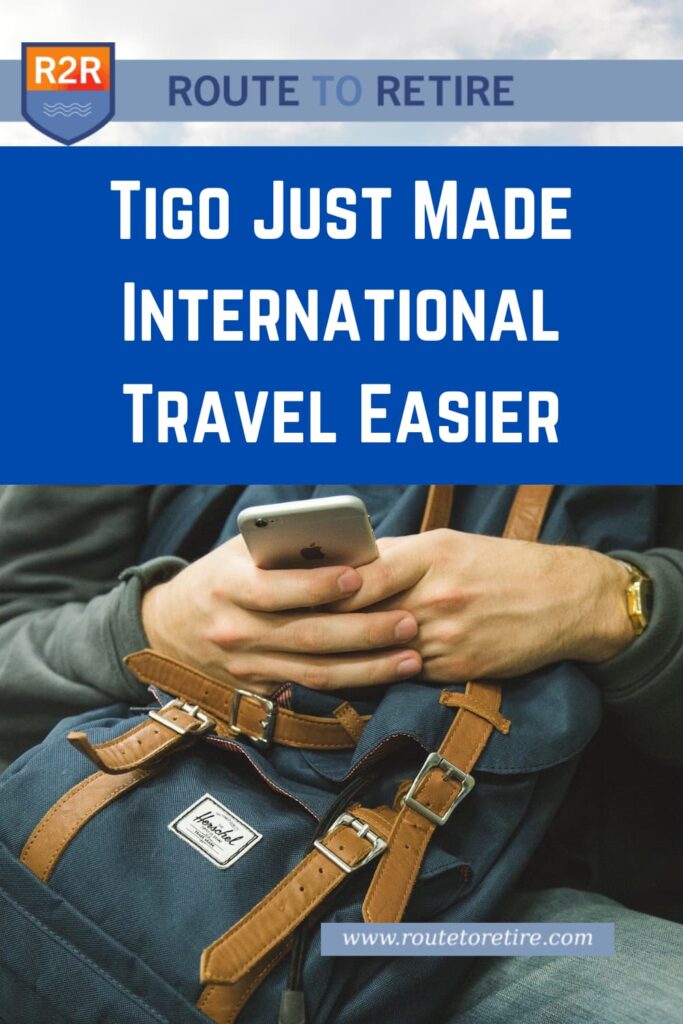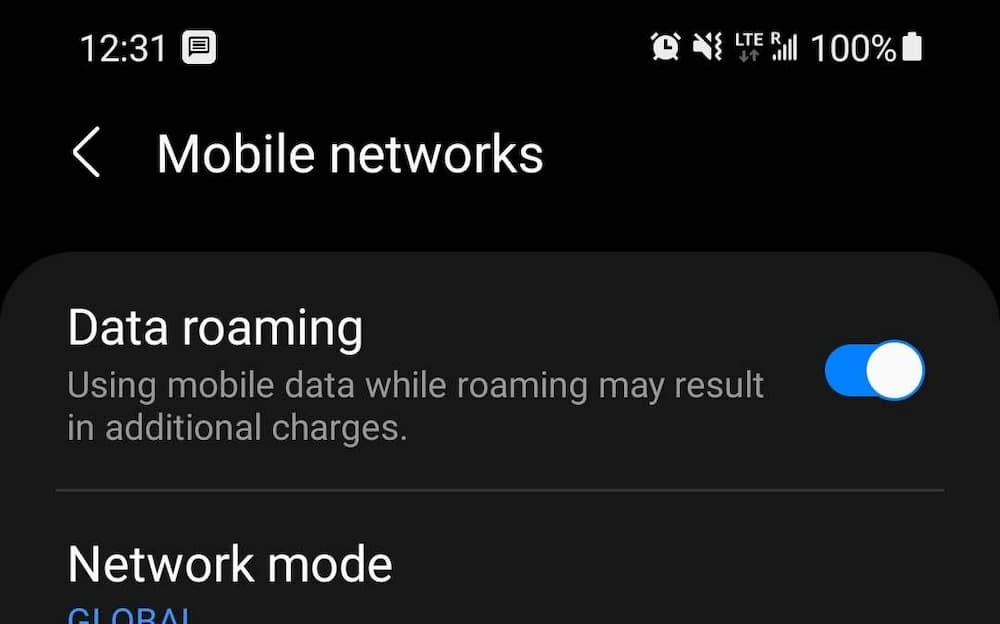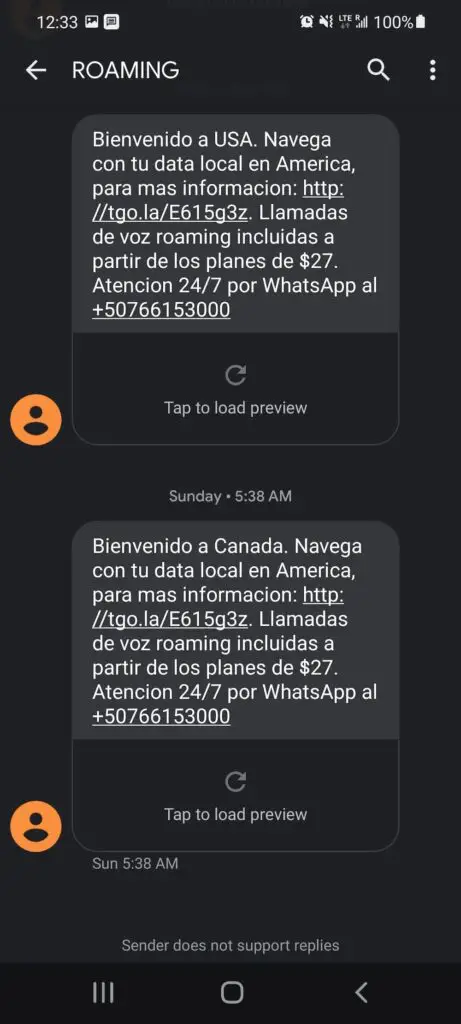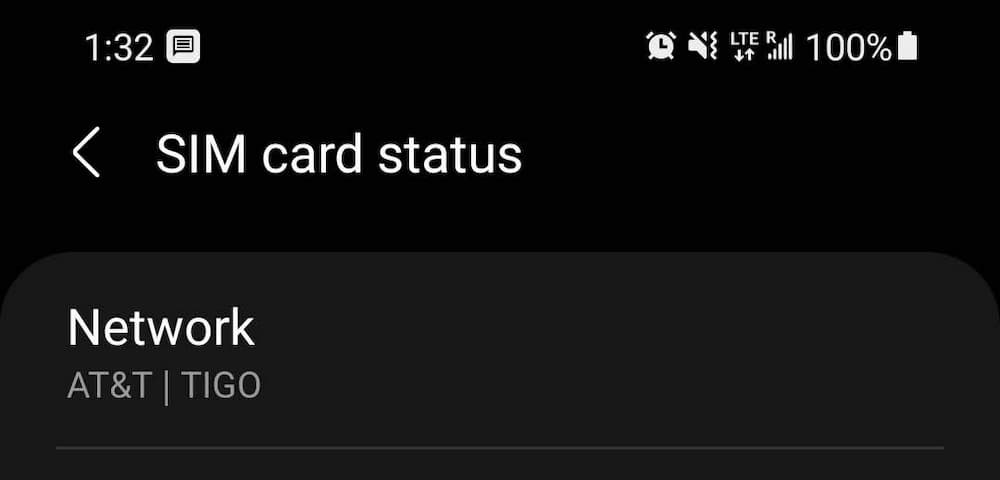Disclosure: This post contains affiliate links and we may receive a referral fee (at no extra cost to you) if you sign up or purchase products or services mentioned. As an Amazon Associate, I earn from qualifying purchases.

Tigo made a new change recently and it’s something that can make life easier for those on some of their cell phone plans.
If you do a lot of travel back and forth between different countries like we do, you might be familiar with the SIM card juggling you need to do (unless you have a dual-SIM phone).
In the U.S., you can use a service such as Google FI or T-Mobile to give you free roaming in other countries. But if you don’t, you might find yourself digging in your wallet to pay for roaming service.
However, if you’re cheap and travel-savvy, you know that it’ll generally be dramatically less expensive to buy cell phone service in the country you’re visiting or living in as an expat. You’ll get a new SIM card that you can pop in your phone and ta-da, you now have a local number there with the ability to make and receive local calls in that country.
That doesn’t necessarily allow you to make and receive calls and texts back to the U.S. (unless you’re using Google Voice for a more elegant solution). But with the cell service in the country you’re visiting, you should be able to use data to access the internet and other apps for communication (WhatsApp, Signal, Telegram, Facebook Messenger, etc.).
Perfect, right? In fact, this is what we’ve been doing for two years now.
We have service through a Panamanian cell phone company named Tigo (formerly Movistar). We pay $39.22/month out the door for my phone and the same amount for my wife. This is a pre-paid plan and gets us 450 minutes of talk-time and 100 SMS messages for use in Panama only, both of which we barely use. But for us, the key is the unlimited data we get.
There are cheaper plans but this one provides tethering and unlimited data. Both of these can be extremely important in places where you have frequent power outages or could possibly lose home internet for 53 days!
That’s served us well over the past couple of years. When we fly back to the U.S. for a month to meet our requirements as perpetual tourists, I pop out the Tigo SIM cards on our phones and put in the ones we have with Total Wireless (a US-based cell phone carrier). Once we land in the U.S., I connect to the airport’s WiFi and activate a pre-paid month of service with Total Wireless.
I’ve written about how we switched over to Total Wireless long before we moved to Panama just because it’s so much cheaper for the same service… Total Wireless… Same Verizon Network, Less $$$.
We usually pay just under $60 with them for our two phones and that gives us unlimited text and talk, and unlimited data (throttling down after 30GB), and tethering. If you’re still using Verizon and want to save some money, consider a switch to Total Wireless. It’s easy, you keep the same phone number, and you still get Verizon’s network and coverage.
So, it’s not the end of the world to do this swap, activate service, and then do another swap and activation when we get back to Panama. The whole thing does have a few issues though…
The cost of overlap
We end up with some overlap that costs us more money. For instance, if our renewal date with Tigo in Panama is on the 15th of the month and we leave on the 1st, we just let two weeks of service go to waste.
On the flip side, suppose we stay in the U.S. for 6 weeks. We now have to pay for another month of service with Total Wireless that we’ll only barely be using.
The re-activation in Panama
I can’t re-activate the service with Tigo in Panama right from my phone like I can with Total Wireless in the US. I could pay at a kiosk while at the airport, but that’s a huge rip-off.
I could wait until we get back to Boquete to visit Tigo and re-start the service. That leaves us with just WiFi though from the time we get to Panama City, through David, and onto Boquete. And for me, I don’t like not having service in case of emergencies.
We also have the option to just leave the service running while we’re in the U.S. That makes it easy and it works… but it’s also a waste of money.
We’ve done all of the above with our trips back and forth, but none of these is a great way to go. On our last couple of trips though, I started going to the Tigo office before we left and ask them to turn off my auto-renewal. I’d then give them a new start date on when we plan to come back.
That’s worked the best but it does mean that I have to visit the Tigo office each time. I also have to guess when we’ll be back in Panama. We don’t always have that info since we don’t necessarily have the return trip booked at that time.
The swap/activate fun
Don’t worry, I’m not a complainer. The minor inconvenience of swapping the SIM cards and re-activating the service each time is not that big of a deal.
I keep a paperclip in my backpack, handle it on the plane, and activate them in the first airport in the country we land in. It’s far from a big worry in my mind.
However, I’m always looking for ways to streamline things.
Tigo makes an important change
Before we headed back to the US again in July, I stopped at the Tigo office in Boquete. I was there to do my new routine of turning off auto-renewal and giving them a new service start date.
Hernan, who’s an awesome guy to work with there, started to go through the process. But then he told me something interesting.
Tigo was just starting to allow free roaming in various countries including, the U.S. and Canada. I believe they were already offering that in Mexico and Central America before this.
So remember when I mentioned at the beginning of this post that if you were in the U.S. and had T-Mobile, you could go to another country and use roaming for free? Well, this is the same thing, but from Panama and even more robust!
Funny enough, this was starting on the day I was in the office talking to Hernan so it was new to everyone. I decided to give it a shot and see how it would go.
Although our service with Tigo is slightly more than we’d pay in the U.S. with Total Wireless, we gained quite a bit:
- No need to end and re-start service with Tigo
- No hassle of swapping out SIM cards or re-activating
- No overlap of service that usually costs us a little money
- Unlimited data per month (capped at 2GB per day)
- One service means more simplicity
In other words, we just leave everything as is and it just works.
This roaming benefit is only for plans that are $27 and above. Ours is $35/month so we’re covered. You get unlimited data per month though it’s capped at 2GB per day. You’re also given a limit on the voice minutes depending on the plan. In our case, that’s 150 Panamanian talk minutes/month but again, we use Google Voice, so that’s not important to us.
You can get more details on the Tigo roaming perk here.
Some observations on the roaming perk in use
The roaming was seamless. The one note is that you need to ensure is that roaming is enabled on your phone, which we’ll just leave turned on from now on.

When we arrived in Texas from Panama on July 7, we took our phones out of airplane mode and we were good to go.
Both our phones showed up as being on AT&T’s network. Years ago, this would have been problematic as they didn’t have great coverage in the places we would go. That’s pretty much all in the past now though. We didn’t have one place where the coverage was bad during the month we were in Texas and Ohio.
The bonus was when we went to Kelleys Island in Lake Erie for a weekend. We stay on the north side of the island, and we usually get no signal at all. There’s no good Verizon coverage there.
However, we had a great signal… from a Canadian tower. We wouldn’t have been able to do that with Total Wireless because that service doesn’t give us roaming. But because the whole point of using Tigo was to allow roaming with Canada included, it worked like a champ!

Here are a few obligatory pics from our fun time at Kelleys Island…
We noticed that a few websites or apps still acted differently thinking we were in Panama. Basically, they were checking our IP address through the carrier instead of our GPS location.
We’re already used to that while in Panama so that’s not a big hurdle. We would just toggle on our NordVPN clients on our phones, refresh the page or app, and we were good-to-go. If you plan to stream media like Netflix or Amazon while outside of your home country, a VPN client like NordVPN is essential. It’s also just good practice to have and use for security regardless of if you ever leave your home at all!
Finally, this isn’t a Tigo issue, but be aware that you still have your Panamanian number while in the U.S. In our case, that’s irrelevant since we use Google Voice so our US number sticks with us no matter who we use. All our US calls and texting are done over WiFi and data, not through the regular cell phone avenue.
So this wasn’t a problem in the least for us, but it could be for you.
Tigo’s new free data roaming in these new countries is awesome. Not only will this save us a few bucks as we travel, but it’s also so much simpler and one less thing to think about.
The best part is that when we head to Mexico next spring before we move back to the US, we can use this as well. We’ll just turn off the auto-renewal to be a date once we’ll be moved back to the U.S. before we leave Panama and we’re done. We’ll enjoy the service in Mexico and likely for a little bit of time in the U.S. as well… I love it!
Plan well, take action, and live your best life!
Thanks for reading!!
— Jim








Seems like a great service. Free roaming is great! Do you need to have a Panamanian address to sign-up? 😉
That said, the ‘common’ solution many folks around the world use is to just get a dual-sim phone and swap sim-usage when they’re in a location not provided by their regular phone service. It’s worked for me (from time to time)!
Good post though, and food for thought if you can get free roaming!
Yeah, the dual-SIM phones are nice convenience when bouncing back and forth. That said, it takes about 2 minutes to power down the phone, swap out the SIM, and bring it back up – that’s not really that much of a hassle. The bigger inconvenience is the activating and possibly de-activating services in both countries and the cost of overlap even with the monthly MVNOs. Again, none of this is the end-of-the-world, but it’s definitely nice not to have to think about this on this list of things to do when traveling back and forth. 🙂
Whoa, there are so many new and low cost phone services that are popping up and/or are becoming more mainstream and I love it!
I used to use Mint and I wish I still used it but I switched back to Sprint once I saw a plan that had very similar features to Mint. I couldn’t pass up that deal then.
That’s funny you mentioned Mint, David. Now that I’m realizing Verizon coverage isn’t the only game in town anymore, I’m going to be willing to try some other MVNOs once we get back to the U.S., and Mint Mobile is at the top of my list. Nice job on the good deal with Sprint!
Great post!! Thank you! So you’ve been able to be a visitor for a few years by leaving every 6 months for 30 days, this is something we were contemplating but worried we would not be allowed to do this. This gives me hope!
Hi, Susan – that’s correct. We’ve been leaving every 6 months for 30 days. Your concern is valid though – they just changed the rules a month or so ago and said that you couldn’t stay in the country for more than 90 days at a time. That caused some real concerns for us (and a lot of the industries that rely on snowbirds visiting), and they eventually backed off of that for U.S. and Canadian citizens only. Those 2 countries can still do 6 months in and 30 out, but everything else is now on 3 months in and 30 out.
That works out well for us, but bear in mind that rules like this can change at the drop of a hat (almost no notice was given). So, it’s ok to do for a little while, but if you love it there and plan to stay for the long term, it’s worth getting residency if possible. It’ll make life a lot easier. 🙂
Not working for me? I have a contract with Tigo as mentioned. I’m on Boston and so far testing this doesn’t seem to work. Android 12. They android tools does list At&t – Tigo! I can’t seem to call anyone in Panama or here and no phone calls from Panama are being received.
Hi Craig – unfortunately, I think you’ll need to contact Tigo to see what’s going on. The only thing that comes to mind is that maybe your plan doesn’t include the free roaming perk? Not all the plans do so that might be possible. I’d recommend checking with them to get the scoop.
Good luck!
How to deactivate autorenew data
Hi Avinash – you should contact Tigo to ask how to do that.
Can I activate a sim card from Texas prior to visiting Panama?
Hi Chrishelle – I believe your only option is to visit Tigo first to get your SIM card (I don’t think they ship, especially internationally). Unfortunately, Tigo isn’t in the U.S. either. So you’d need to get a SIM card once you get to Panama. You can get activated for service at the Tocumen airport but it will be overpriced. The airport does offer WiFi so if you’re able to wait until you get out of the airport, you’ll find the prices for Tigo service much cheaper elsewhere. You can find places to make that happen all over the place there. Have a great trip!